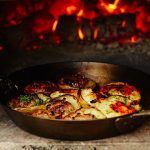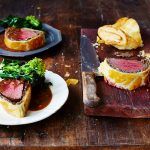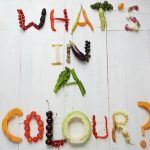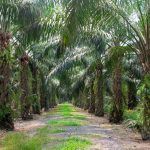Lamb is a Sunday roast favourite across the UK and is often the centre of a big family feast. But where exactly does lamb come from and what's the difference between lamb and mutton?
Lamb is a Sunday roast favourite across the UK and is often the centre of a big family feast. But where exactly does lamb come from and what’s the difference between lamb and mutton? In this feature, we’ll give you a brief overview of what lamb is and explain the basics of welfare and sustainability.
Lamb vs sheep
Lambs are young sheep and are not dissimilar to goats in their ability to live on challenging terrain and fend for themselves in all weathers. For this reason, they will often be reared on land which cattle can’t cope on, such as steep or rocky terrain.
Lamb is the name given to the meat from a young sheep, and is also the name given to the animals themselves, up until one year of age. After this, lambs are referred to as hoggets, but the meat will sometimes still be sold as “lamb”. The terminology can differ depending on who you’re buying the meat from, and where in the world you are. When hoggets get older, their meat will generally be sold as “mutton”, although they will be referred to as hogget or sheep.
Meat quality
As with all livestock, the older the animal gets and the more its muscles are used, the more flavour and texture it will develop. Mutton is stronger than lamb, so is perfect for adding strong flavours to, such as in curries, stews or kebabs. Young lamb meat is milder, and should be simply prepared to really enjoy its delicate flavour.
As younger animals have built up less muscle structure and connective tissue than older animals, their meat needs less cooking to create an enjoyable texture. For example, a lamb rack or a lamb leg are delicious served pink, but older animals will often need slower, longer cooking to get the best from the meat.
Animal welfare
For years, sheep have had the benefit of being left to roam free on pasture, with minimal human intervention. Many of us have images in our heads of an open rugged landscape with a bearded shepherd and a trusty sheepdog. In many places, this still remains true. However, as the demand for lamb is moving away from being a seasonal treat, there is a demand on the industry for lamb to be available consistently all year round. This results in many lambs being brought indoors, to allow lambing to happen at times of year when there is a shortage of fresh green grass.
Believe it or not, when left to the natural seasons, lambs should be born at Easter rather than consumed at Easter. This then allows them to be fattened on grass over the summer. In order to have young lamb ready for Christmas or Easter, farmers are often forced to rear indoors, meaning some lambs will never get to graze on pasture.
If you want to enjoy good lamb at Easter, you should try to go for hogget, which will naturally be one year old when Easter comes around.
To enjoy lamb that has been reared outdoors, on natural pasture-based diets, it is important to look out for free-range or pasture-raised lamb when you’re shopping. By doing this, not only will you receive a better product, but you’ll also be flying the flag for lamb produced more as nature intended.
New Zealand lamb
New Zealand is synonymous with a lot of lamb! In fact, there are reportedly many more sheep than people living in New Zealand. The reason for this is down to the country’s mountainous, grassy and cool environment – there are few other animals suited to this landscape. The low population density on the island also allows for lambs to populate vast areas of land, as there is little competition from humans. Lamb from New Zealand is exported all over the world, including the UK, and is often the most affordable option due to the efficiencies the country has developed. New Zealand benefits from low production costs, lots of space, and lots of grass – the perfect ingredients for quality, affordable lamb.
New season lamb
You will often see this promoted on labels, menus and in butchers, but few understand what it actually means. While lamb is produced all year round, as lambs are fed by their mother’s milk, the mothers (or ewes) need a good supply of fresh grass in order to feed. For this reason, lambing season, when lambs are born and reared, tends to coincide with grass growth in the spring. After 3 to 4 weeks on milk, the young lambs can then enjoy the fresh grass, too. Fresh grass is less available during winter months, resulting in less newborn lambs arriving at this time. Lambs born in early spring will be available in shops throughout the summer.
Saltmarsh lamb
Some lamb goes even beyond free-range, to actually specify the type of pasture it is reared on. “Saltmarsh lamb” is a real treat for anyone who can get access to it. This is meat from animals reared on grassland on the coast or on salted marsh land, where they enjoy extremely clean, salty pasture and crystal clean fresh air. This lifestyle results in high-quality, sweet tasting lamb that should be cooked with little more than basic seasoning to really appreciate the flavour and texture of the meat.
What to look out for
Lamb rarely has a wide choice of welfare tiers in the same way as pork or chicken. Most supermarkets will stock either British or New Zealand lamb, depending on the time of year. Some retailers will sell the two side by side, with the British product usually at a premium cost. Both products are produced to a reasonable standard, and the quality difference will be hard to notice to the average consumer.
Certified organic lamb is worth looking out for, as this meat will have been reared on land which is free from chemical fertilisers.
To guarantee the very best in quality and welfare, it is worth looking out for product which is 100% pasture raised, such as that labelled Pasture For Life. This is the only label that assures the ewes and lambs ate nothing but a natural diet of grasses and herbs such as clover and chicory, and that corn and soya based feeds were avoided. Good for the environment, the animal and human health.























